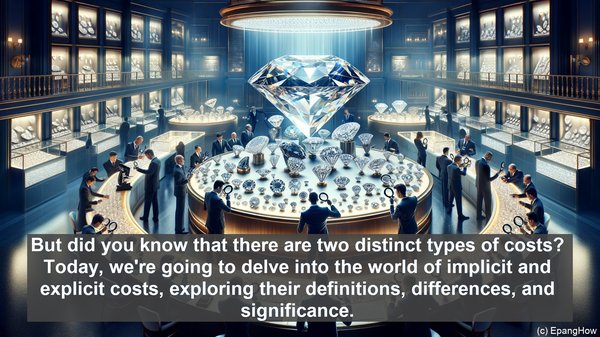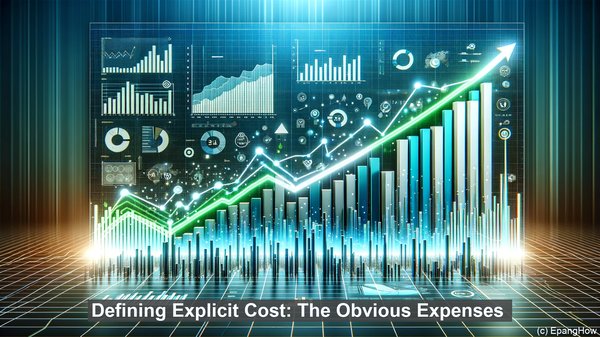Introduction: The Two Sides of Cost
Hello everyone! When it comes to economics, cost is a crucial factor in decision-making. But did you know that there are two distinct types of costs? Today, we’re going to delve into the world of implicit and explicit costs, exploring their definitions, differences, and significance. So, let’s get started!

Defining Explicit Cost: The Obvious Expenses
Explicit costs are the direct, tangible expenses that a business or individual incurs. These costs involve actual cash outflows, such as wages, rent, utilities, raw materials, and equipment. They are the easily identifiable and quantifiable monetary transactions that are recorded in accounting books. For instance, if you’re running a bakery, the cost of flour, sugar, and other ingredients would be explicit costs.
Understanding Implicit Cost: The Hidden Opportunities
On the other hand, implicit costs are the opportunity costs associated with a decision. Unlike explicit costs, they don’t involve a direct monetary outlay. Implicit costs represent the value of the next best alternative that is foregone when a particular choice is made. These costs are often related to the use of self-owned resources, such as time, skills, or assets. For example, if you decide to start your own business, the implicit cost would be the salary you could have earned by working for someone else during that time.

Differentiating the Two: Money vs. Opportunity
The key distinction between implicit and explicit costs lies in their nature. While explicit costs are tangible and involve actual monetary transactions, implicit costs are intangible and revolve around the concept of opportunity. Explicit costs are easily quantifiable, as they have a clear price tag attached. On the other hand, implicit costs are subjective and require careful evaluation of the alternatives and their potential benefits. In economic analysis, both types of costs are considered to get a comprehensive view of the overall expenses involved.
Significance in Decision-Making: Weighing the Trade-Offs
Implicit and explicit costs play a crucial role in decision-making. When making a choice, it’s essential to consider not only the explicit costs but also the implicit costs. By factoring in the opportunity costs, decision-makers can assess the true cost of a particular course of action. This evaluation helps in making informed decisions, as it provides a holistic understanding of the resources, both monetary and non-monetary, that are involved. Ignoring either type of cost can lead to skewed decision-making and potential losses.
